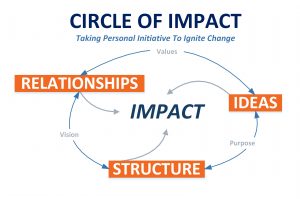Are You in Transition?
A number of people have spoken to me recently about the sense that they are in transition. They cannot articulate why. If you are having a sense of being in transition, then read on. This post should help.
We feel things before we know things. We only know things because we think them through. If we don’t think them through, we can easily become confused. We feel that our perception of the world has no logic, consistency, or means of making sense of it. As a result, we are living in a world that does not make sense.
What does making sense mean? Especially with this sense that you have is pointing you towards a transition in your life.
Making sense means that I understand the situation that I am in, that I have a clear idea of what my transition is leading me, and that I know what I must do now.
So …
Do you understand the situation that you are in?
Do you know where your transition is leading you?
Do you know what you must do?
If you answered no or I am not sure about any of these three questions, now ask.
How do I make sense of this transition that doesn’t make sense?
Understanding Your Transition
I am assuming that the situations you feel in transition did not happen overnight. They are a product of many well-meaning, rational, common-sensical decisions or non-decisions over a long period of time. As a result, it is difficult to pinpoint why you are in transition.
I also assume that you may not be able to identify why you are in the transition that you are in. You did not go looking for it. Yet here it is and you really can’t run away from it. What then do you do?
You must first understand what is going on and why. By lacking clarity of understanding, you may mistake the reasons for being in transition and therefore make decisions that are not in your best interest. We gain understanding by asking questions.
Here are two sets of questions that you need to ask.
What kind of transition situation is this?
Is it one where you lack clarity about what should be the right way to conduct yourself?
Is it one where your relationships between people are broken and you are at-odds with each another?
Is it one where how your organization is not working well?
These questions are based upon my Circle of Impact model.

My experience shows me that problems have three sources. They come from either our Ideas, our Relationships, or the social and organizational Structures that provide the contexts for how we spend our time.
Problems can have more than one source. Usually, one dimension is more prominent. The principle that I follow is that whichever dimension is the perceived source of the problem, the other two dimensions are the resources for the solution. In other words, we don’t find the solution in the problem itself, but rather in one of the other dimensions. In situations where our problem has more than one source, then we choose the one that we believe is the most critically in need of resolution.
Seek to understand how you got here and where you want to go?
These questions are based on my Five Questions that Everyone Must Ask.
We ask the following.
1. What has changed that has led you to see that you are in transition?
How are you in transition?
What is the historical progression of change that illustrates this transition?
You need a timeline to understand what has transpired. When I coach groups, I give each participant a handful of Post-It notes. On a wall, a chart with three timelines is drawn. On each Post-It note, participants write about the moments that are meaningful to them across three timelines – personal, work, and community.
You can do this as an individual. Go back in time to your first recollection of being in transition. For a group, go back as far as when the group was formed. Creating a timeframe for understanding the transition that you are in resolves some of the anxiety that you may be feeling. If you are clear about the past, you have a better chance of gaining clarity about the future. Then you will begin to make sense of the transition that you are experiencing.
2. What is the impact (effect) of this progression of changes?
These transition points are moments of impact. They affect how you feel and think about yourself. This question is asking how you are changing through this time of transition. We are looking for changes that make a difference that matters.
3. Who is being impacted by this situation?
You are not the only one being impacted. Who else is being impacted by your sense of transition? Once you have identified them, have a conversation with them. Ask these questions if you feel like it.
4. What opportunities for change can you identify?
Not an easy question to answer when you are in transition. Sometimes we feel that we need to leave a place, a job for example. It is time to go. People tell me this all the time. The big question is where do I go? For others, they are being led towards something new. As a result, they see the opportunities being presented to them in their feelings of transition. Are you transitioning away from something that has reached a point of completeness? Or are you transitioning towards something that is opening you up to new opportunities that are not available where you presently are? A more basic way to understand this pair of transitions is the difference between escaping from an uncomfortable situation or being called to a new opportunity for impact. Which is it for you?
5. What problems have you created? What obstacles do you face?
Also, not an easy one to answer. My experience is that our transitions are often brought about by our failures or the ending of a relationship or a job. Facing up to your problems is difficult. It is essential for you to successfully navigate the path of transition.
I have known many people who get stuck in a transition process because they cannot face the obstacles of their own making. It is important therefore that you resolve where your transition is leading you. By identifying a positive stake in the transition, you will be better motivated to address the problems and obstacles that you face.
Making Sense is a Process
Making sense of change is a process. Ask these questions about every situation you encounter. You don’t have to do it exhaustively. Just saying out loud the questions will help your mind search for answers. Keep track of what you learn by keeping a journal of your transition. Over time, your life will begin to make sense in ways that will amaze you.
If you want to dig deeper into these questions, either for yourself or your group, reach out to me at ed@edbrenegar.com. I’d me honored to help you negotiate the transitions that you are in.


